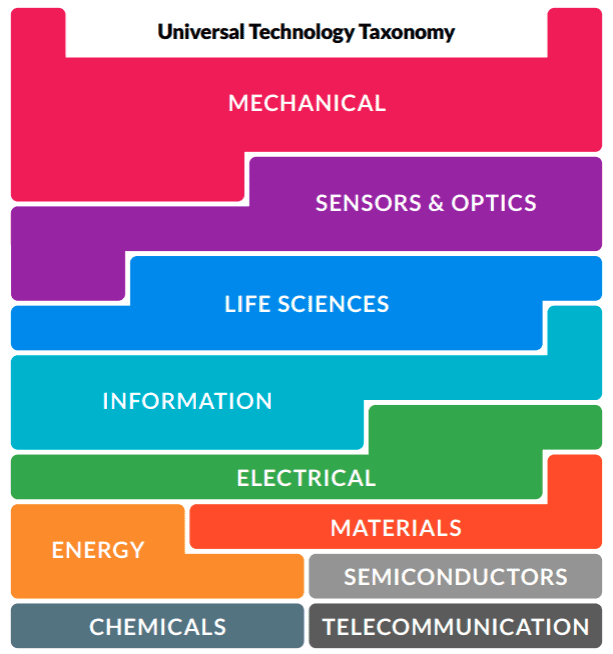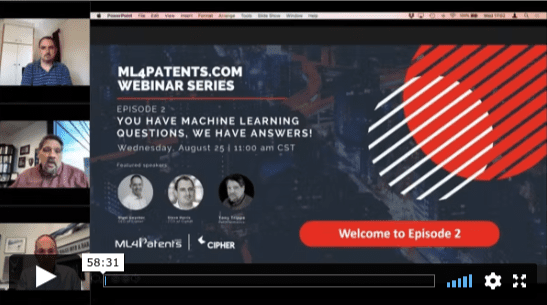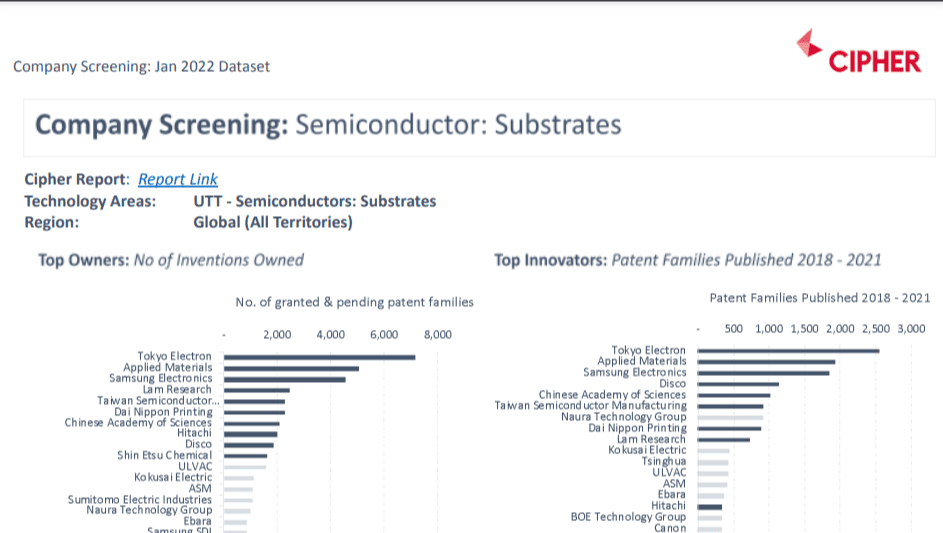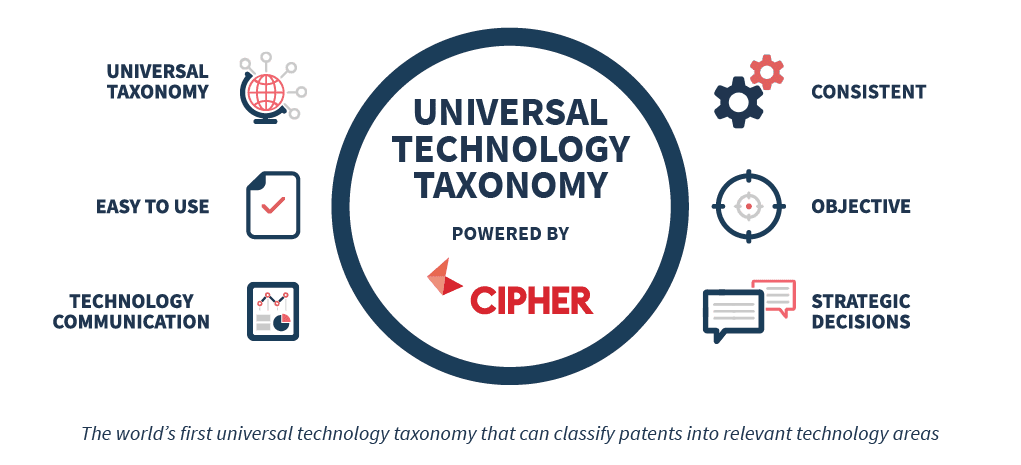
Universal Technology Taxonomy
The Universal Technology Taxonomy (UTT) provides transparency on who owns patented technology globally.
Understand Global Technology Trends
Gain a consistent and objective analysis of patented technologies owned by all companies, across the world.

How the UTT works
The UTT is organised by reference to Technology Superclasses (of which there are 10) and Sub-classes (121).
The taxonomy was designed to ensure that the 44 million plus active patents and applications globally are all equally represented.

Technology classes
A UTT user can view all patented technologies by:
- A single organisation or by a group of companies
- Technology trends – either globally or nationally.
The UTT includes patent intelligence relating to:
- Size, geography, and activity
- Quality, compound annual growth rate (CAGR), or cost
- Risk – both from operating companies and from non-practicing entities (NPEs)

How is the UTT different to Patent Office CPC codes?
There are over 300,000 CPC (and a similar number of IPC) codes. These help Patent Offices identify prior art when examining patent applications.
They are not useful for identifying patented technologies and do not purport to classifying patented technologies.
Download the Universal Technology Taxonomy

Download the UTT to see full details of the 10 technology Superclasses and the 121 technology Sub-classes, together with definitions of their scope.
Frequently Asked Questions
What’s the difference between the Universal Technology Taxonomy and Cipher Custom Taxonomies?
The UTT as the name suggests is Universal. It analyses the entire patented world through a common lens. Custom taxonomies are created by companies to see the world through their technology taxonomy. They are much more specific as to scope – and typically only cover part of the technology landscape
What’s the difference between Cipher’s Universal Technology Taxonomy and clustering?
The universal technology taxonomy is a fixed taxonomy that classifies patents into one of the defined classes. Cipher clustering (unsupervised ML) analyses patents into the ‘buckets’ most relevant to the selected company. The UTT is the only approach that provides a consistent view of all patents globally.
Does the UTT provide a better classification than say SIC, CPC or NAICS codes?
SIC and NAICS codes classify companies by their primary activity or principal source of revenue. They form a bedrock for economic and financial analysis. But there is a big difference between what a company does and the technologies that it chooses to protect. CPC codes could give you this answer, there are over 300,000 of these – too many to get your head around or to provide any form of meaningful comparison. Also, there is a predictive element to investment in patents. Patenting activity provides insights into what a company is likely to do in the future. This is totally outside the scope of existing corporate classification systems.
Related Resources

ML4Patents Cipher Webinar
How machine learning was used to develop the UTT.

Free UTT report
View a company screening of Semiconductors.


A Global View of Innovation
An overview of how the world’s inventions are broken down.
Featured Content
Thought leadership content for intellectual property professionals




